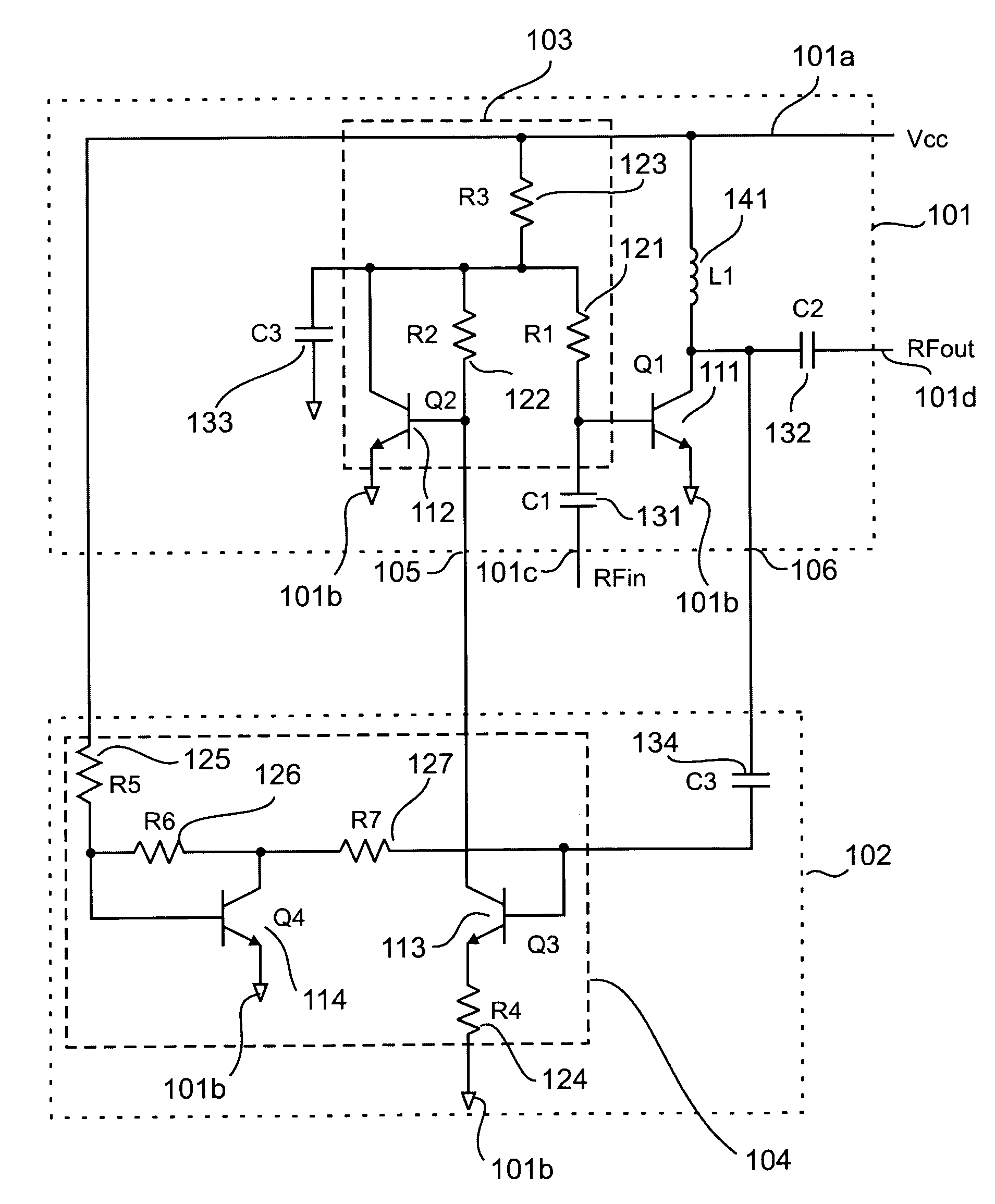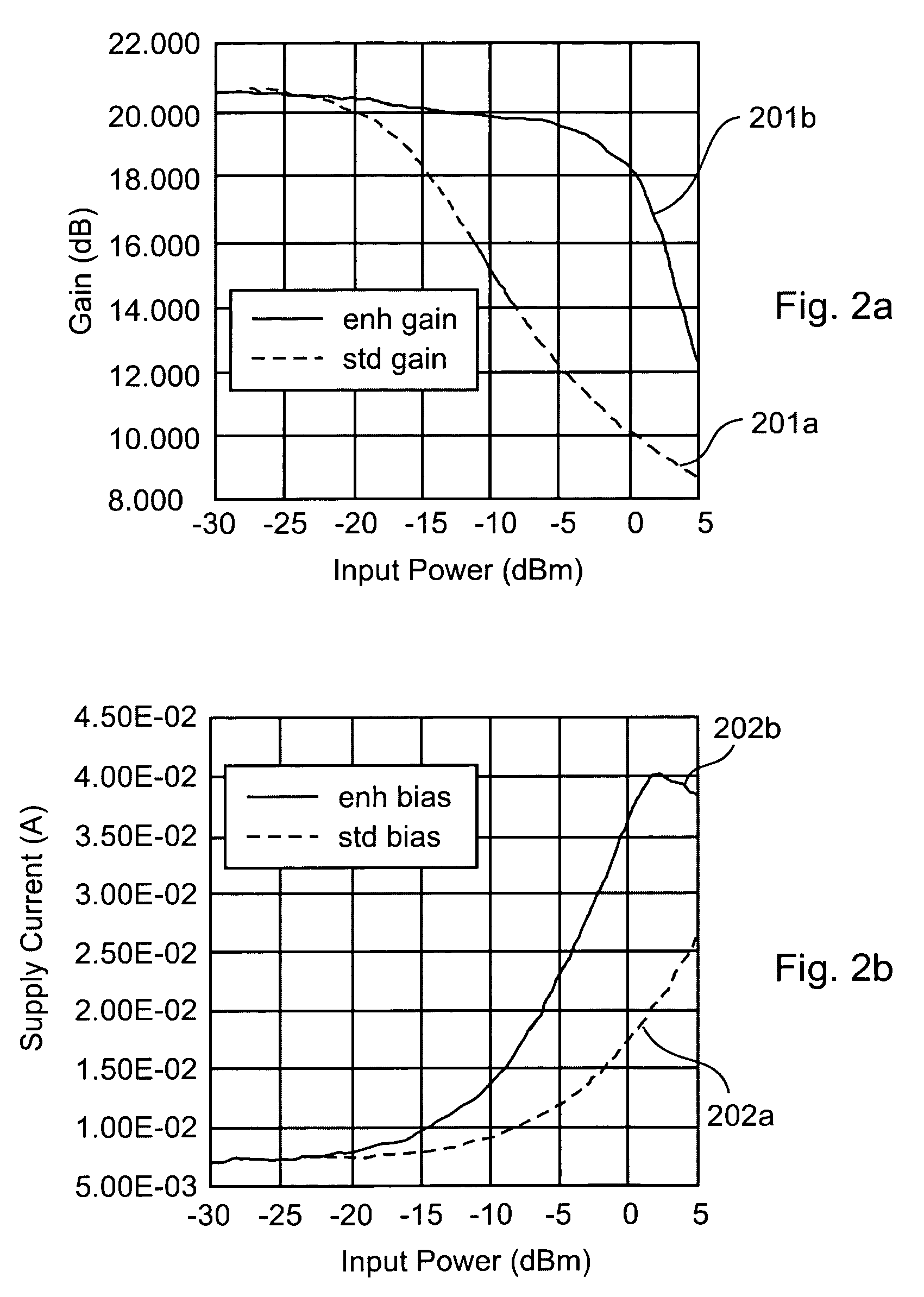Amplifier bias enhancement technique
a technology of amplifier bias and amplifier, applied in the direction of amplifier, gain control, high-frequency amplifier, etc., can solve the problems of long battery life, inconvenient optimum linearity and low noise operation, and input port of the lna
- Summary
- Abstract
- Description
- Claims
- Application Information
AI Technical Summary
Benefits of technology
Problems solved by technology
Method used
Image
Examples
Embodiment Construction
[0012]FIG. 1 illustrates a state of the art amplifier circuit 101 as well as a bias boost circuit 102, in accordance with an embodiment of the invention. A first transistor Q1111 is the predominant amplification transistor and is used for amplifying of a RF input signal that is received from an input port 101c to form an amplifier version of the input signal as a RF output signal at an output port 101d. A coupling capacitor C1131 is used to couple of this RF input signal to the base terminal of transistor Q1111. Optionally, a more advanced coupling network is disposed between the base terminal of transistor Q1111 and the input port 101c for coupling of the RF input signal.
[0013]Choke L1141 is disposed between the collector terminal of transistor Q1111 and the first supply voltage port 101a. This choke L1141 provides a high impedance path to the collector terminal of transistor Q1111. Capacitor C2132 is disposed between the collector terminal of transistor Q1111 and the output port 1...
PUM
 Login to View More
Login to View More Abstract
Description
Claims
Application Information
 Login to View More
Login to View More - R&D
- Intellectual Property
- Life Sciences
- Materials
- Tech Scout
- Unparalleled Data Quality
- Higher Quality Content
- 60% Fewer Hallucinations
Browse by: Latest US Patents, China's latest patents, Technical Efficacy Thesaurus, Application Domain, Technology Topic, Popular Technical Reports.
© 2025 PatSnap. All rights reserved.Legal|Privacy policy|Modern Slavery Act Transparency Statement|Sitemap|About US| Contact US: help@patsnap.com



